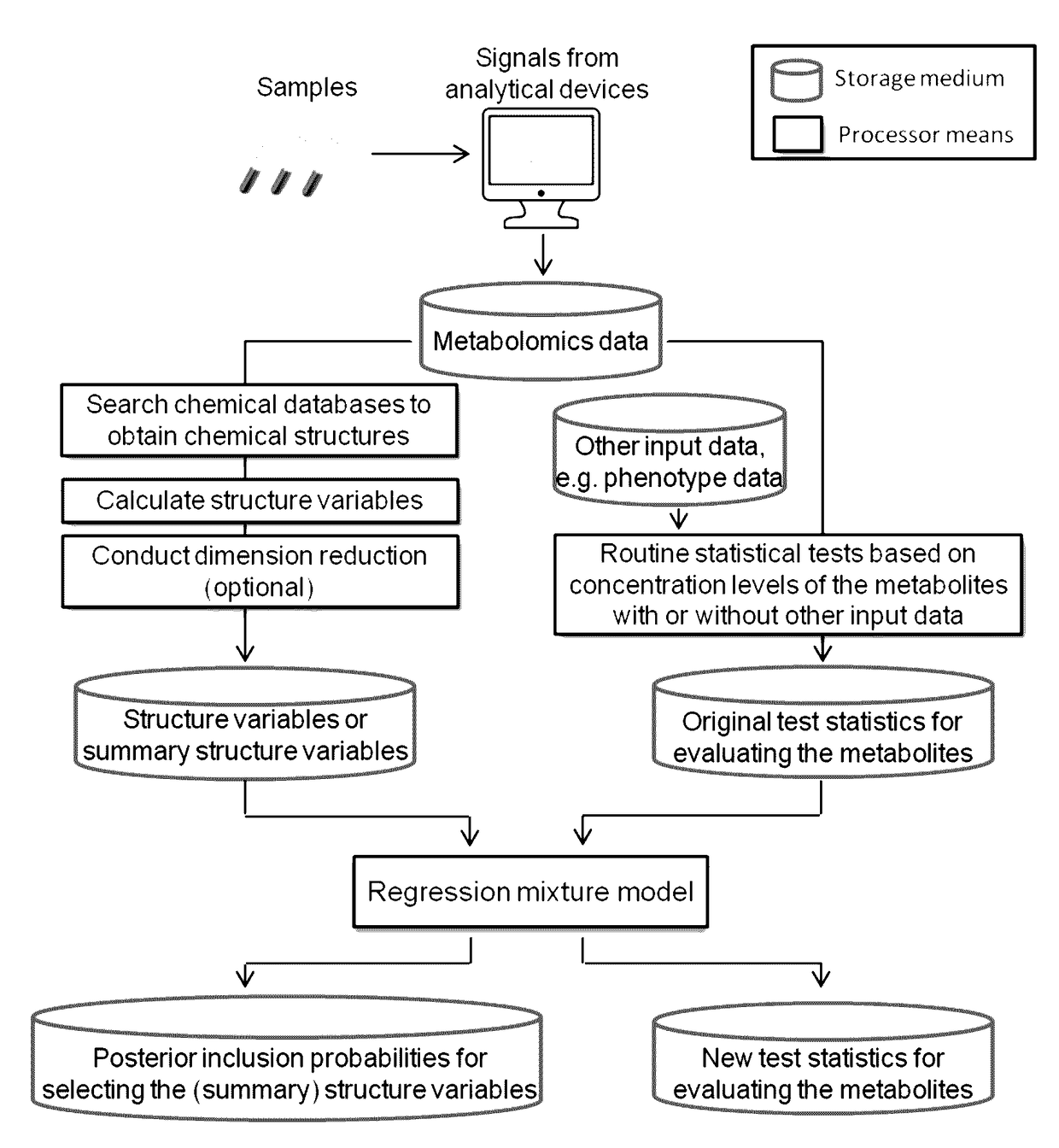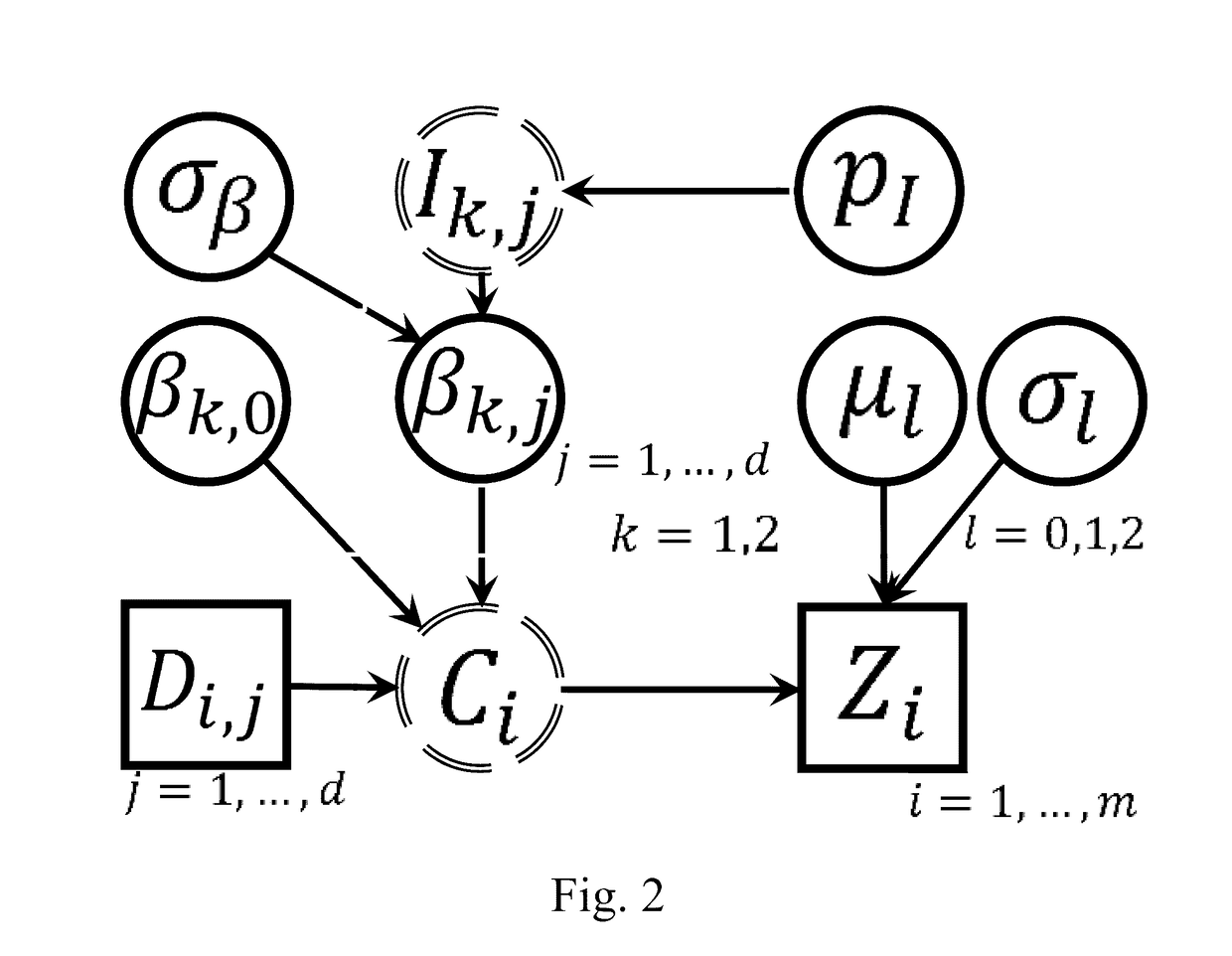Chemical structure-informed metabolomics data analysis
a metabolomics and structure technology, applied in the field of chemical structure-informed metabolomics data analysis, can solve the problems of metabolomics studies often facing the so-called “lack of power” issue, metabolomics data analysis may fail to identify, etc., to improve the evaluation of metabolites, improve the performance, and improve the effect of bioactivity
- Summary
- Abstract
- Description
- Claims
- Application Information
AI Technical Summary
Benefits of technology
Problems solved by technology
Method used
Image
Examples
Embodiment Construction
[0017]The first embodiment of the invention is illustrated in FIG. 1. Below we provide detailed description of each component of the first embodiment. During the description, we will also mention some variations of each component.
Storage Medium for Storing Data
[0018]The embodiment includes storage medium to store all the necessary data to achieve a particular goal or to answer a particular research question of a metabolomics study. Such data may include metabolomics data, i.e., absolute or relative concentration levels of metabolites in a plurality of samples, phenotype data, covariate data, data of sample time, and other necessary data.
Computer Processors in Communication with the Storage Medium for Processing Data and Making Calculations
[0019]The processors will run pre-programed data processing and calculations.
Retrieving Chemical Structures of the Metabolites
[0020]Given the identity of metabolites in a metabolomics dataset, chemical structures of each metabolite can be retrieved...
PUM
 Login to View More
Login to View More Abstract
Description
Claims
Application Information
 Login to View More
Login to View More - R&D
- Intellectual Property
- Life Sciences
- Materials
- Tech Scout
- Unparalleled Data Quality
- Higher Quality Content
- 60% Fewer Hallucinations
Browse by: Latest US Patents, China's latest patents, Technical Efficacy Thesaurus, Application Domain, Technology Topic, Popular Technical Reports.
© 2025 PatSnap. All rights reserved.Legal|Privacy policy|Modern Slavery Act Transparency Statement|Sitemap|About US| Contact US: help@patsnap.com



